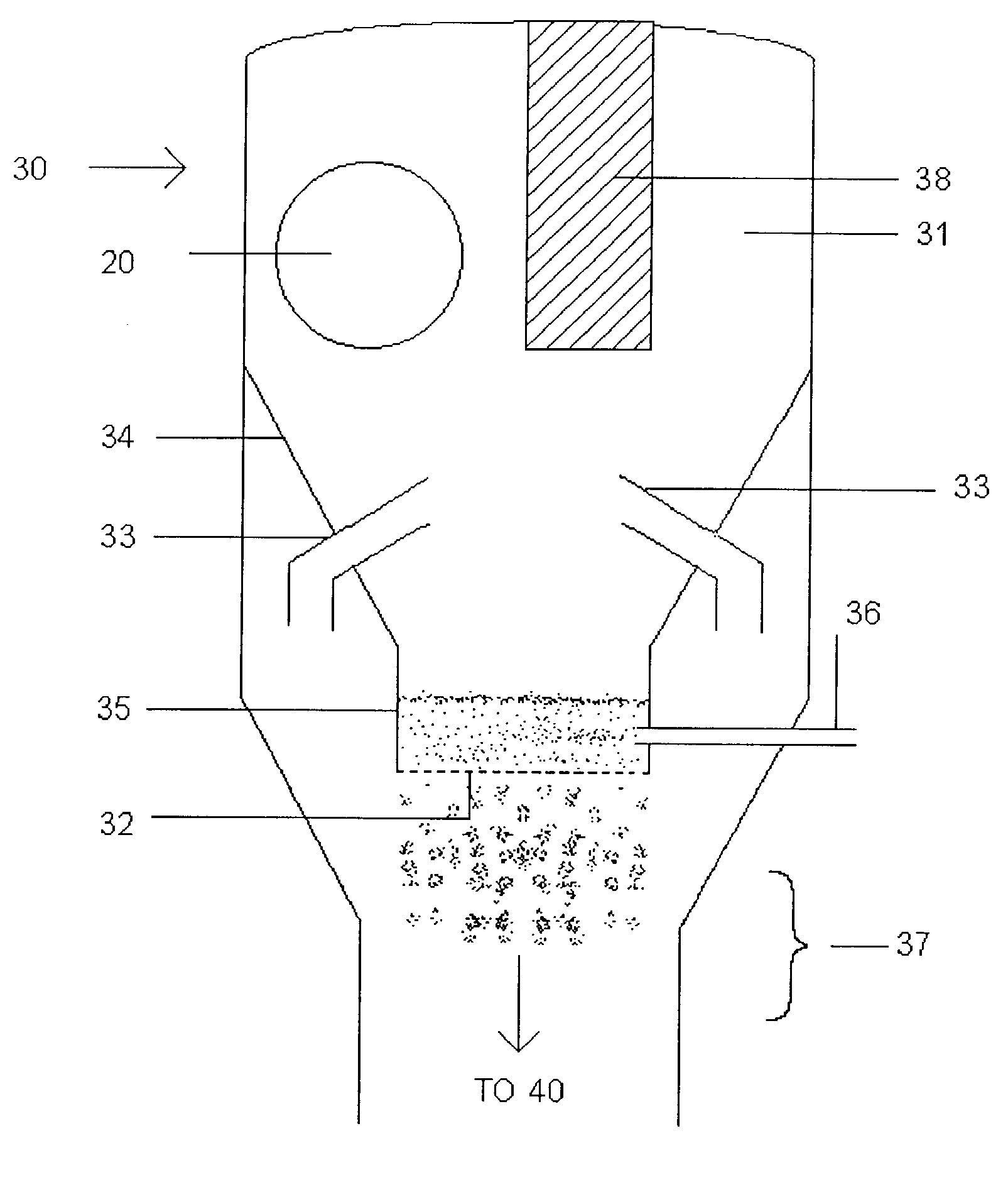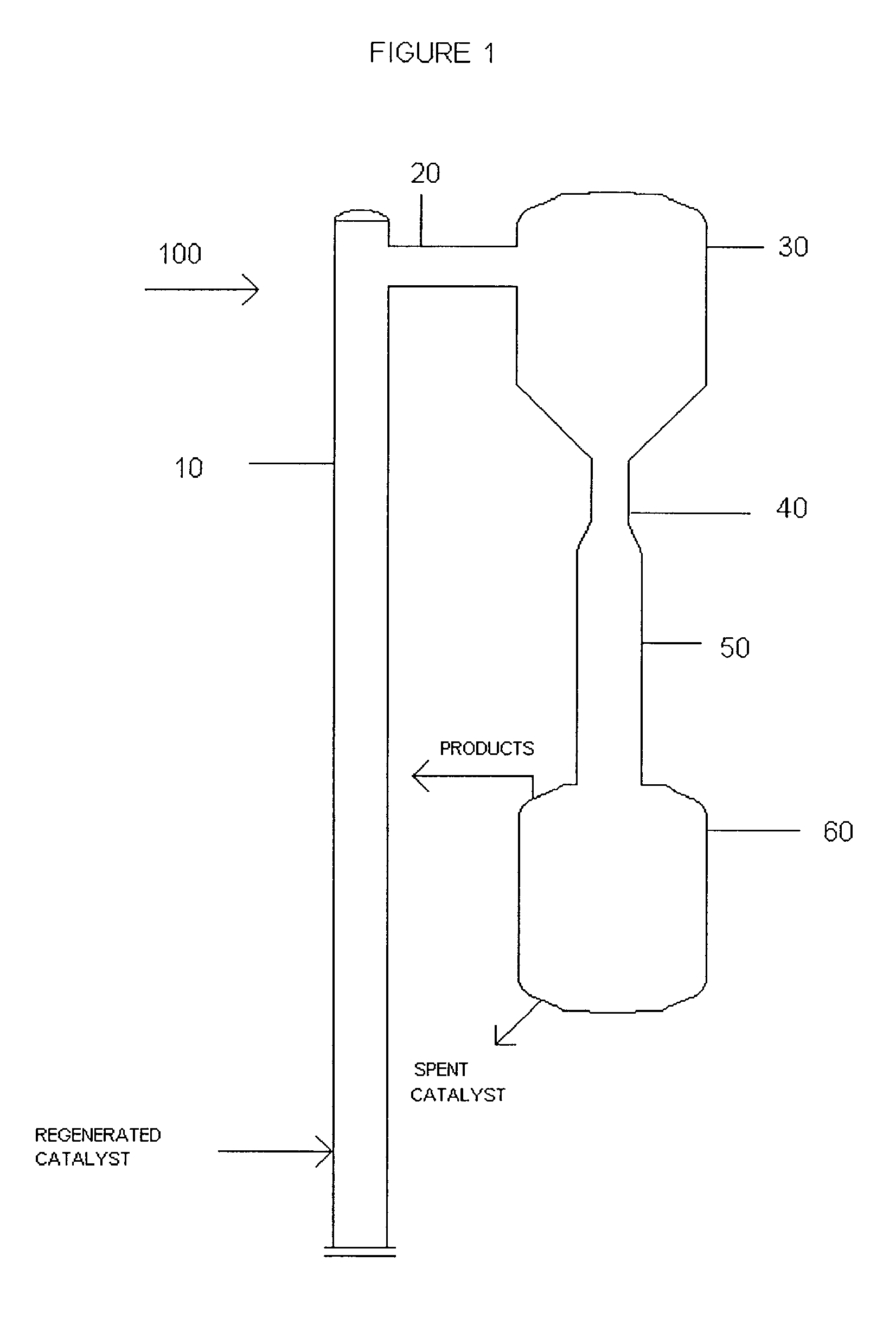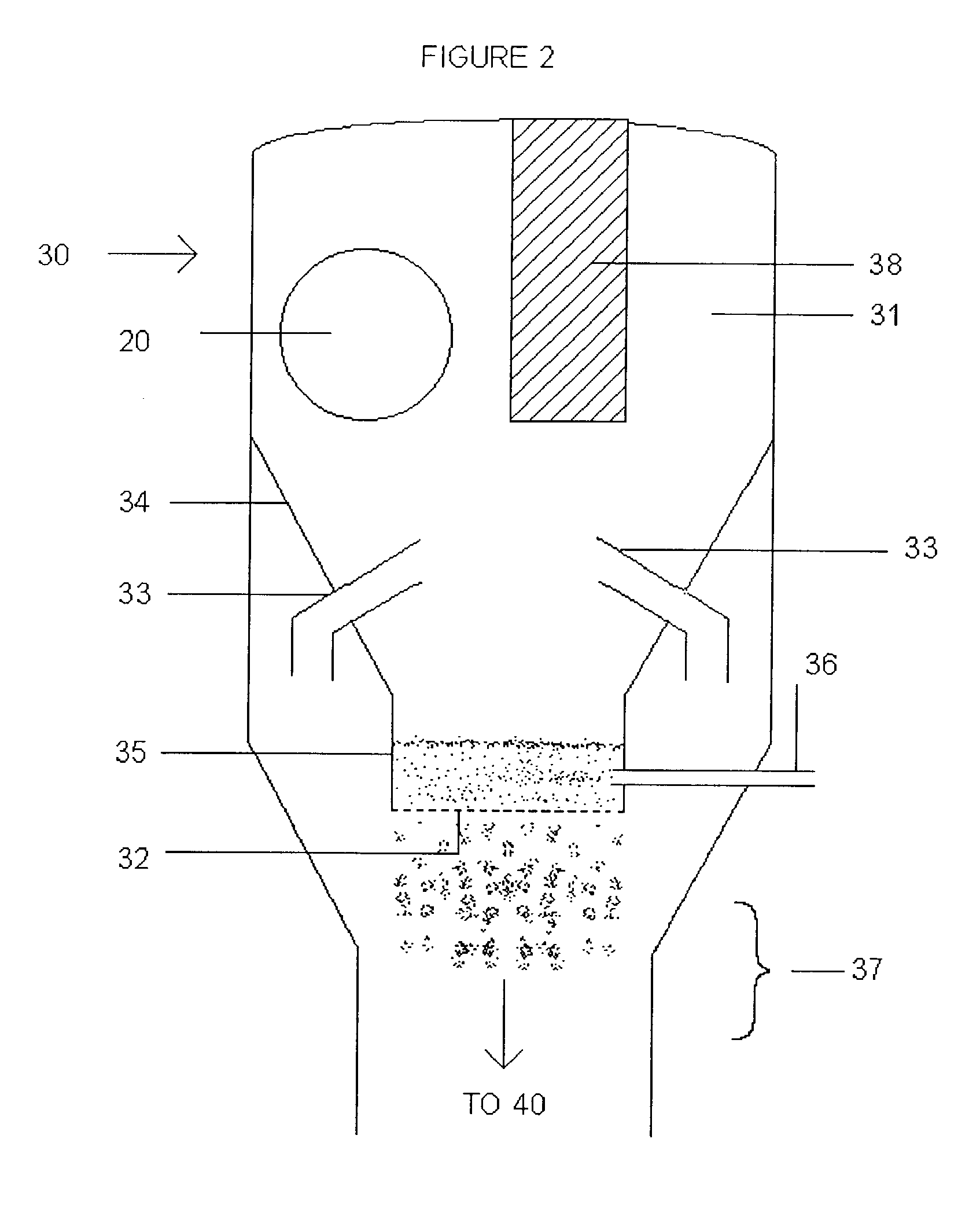Apparatus and process for downflow fluid catalytic cracking
a technology of fluid catalytic cracking and apparatus, which is applied in the direction of lighting and heating apparatus, furnace types, furnaces, etc., can solve the problems of longer catalyst residence time, significant slow catalytic flow, and difficult separation, so as to improve the overall process performance and quick and easy separation
- Summary
- Abstract
- Description
- Claims
- Application Information
AI Technical Summary
Benefits of technology
Problems solved by technology
Method used
Image
Examples
example
[0148]The feed is made up of 80% heavy gasoil and 20% vacuum residue. The feed main features are listed in Table 1 below.
[0149]
TABLE 1D20 / 40.9386R.C.R (wt %)0.38SULFUR (% wt)0.575ASPHALTENES (% wt)0.1TOTAL NITROGEN (ppm)3,211BASIC NITROGEN (ppm)961ANILINE POINT (° C.)80.8VISCOSITY AT 40° C. (cSt)268.4VISCOSITY AT 100° C. (cSt)14.57ASTM D 1160 DISTILLATION@ 760 mmHg, ° C.IBP334.55%387.110%398.320%423.230%440.640%455.650%471.360%490.470%512.4METALS (ppm)NiV
[0150]The cracking reaction was carried out in an apparatus according to the invention, under overall reaction conditions as stated above.
[0151]Yields of both the Riser Technology column and the invention column are obtained from pilot units, the comparison being established under iso-coke conditions.
[0152]Reaction yields are as listed in Table 2 below.
[0153]
TABLE 2RISERYIELDS BASED ONTECHNOLOGYINVENTIONFEEDWeight %Weight%Fuel gas3.63.5LPG (incl. propylene)20.321.0Gasoline, C5-220° C.47.552.6LCO12.19.6Decanted Oil8.04.8Coke8.58.5Tot...
PUM
| Property | Measurement | Unit |
|---|---|---|
| angles | aaaaa | aaaaa |
| angles | aaaaa | aaaaa |
| velocity | aaaaa | aaaaa |
Abstract
Description
Claims
Application Information
 Login to View More
Login to View More - R&D
- Intellectual Property
- Life Sciences
- Materials
- Tech Scout
- Unparalleled Data Quality
- Higher Quality Content
- 60% Fewer Hallucinations
Browse by: Latest US Patents, China's latest patents, Technical Efficacy Thesaurus, Application Domain, Technology Topic, Popular Technical Reports.
© 2025 PatSnap. All rights reserved.Legal|Privacy policy|Modern Slavery Act Transparency Statement|Sitemap|About US| Contact US: help@patsnap.com



